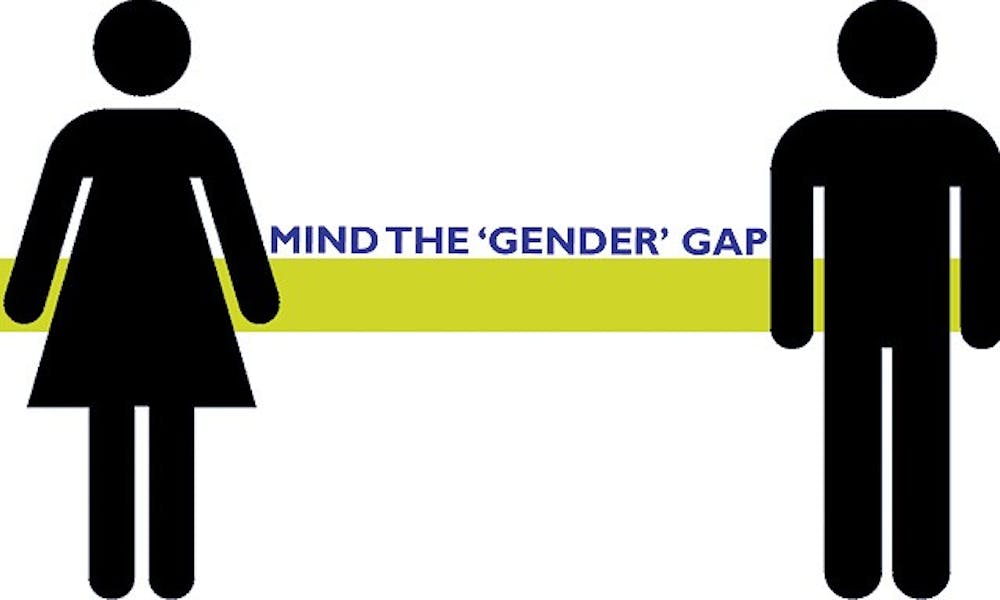The gender gap in math and science is not hard to find—just scroll through the mathematics department’s faculty roster, where out of 28 tenured professors, just one is female. Or take a jaunt across the E-quad--less than a third of Pratt undergrads are women. MIT even has a popular saying about this phenomenon. For female students seeking boyfriends, the odds are good…but the goods are odd.
But if those facts are clear, the reasons are less so. In fact, the question of why so few women are pursuing high-level careers in math and science remains one of academia’s most constantly debated whodunits. Is it cultural? Is it social? Do men and women just think differently?
Enter Megan Cacchio, Trinity ’06, and a team of researchers from Duke’s Talent Identification Program (TIP). During Cacchio’s senior year at Duke, after years of taking high-level math and science courses teeming with testosterone, she decided to investigate this very phenomenon as the subject of her senior psychology thesis.
In particular, Cacchio wanted to know if a gender gap in math and science test scores still existed among the very highest performing middle schoolers. Since it’s the kids from these top echelons of ability who usually end up pursuing careers in those fields, she thought maybe answering that question could help explain why so many of her professors, TAs and fellow students were guys.
“As a woman in science I’ve certainly always had an interest in these questions,” she says. “Since high school I’ve encountered plenty of girls who stayed away from math and science classes, and of course I wanted to know why.”
So she started combing through 30 years of data from TIP, which administers the SAT and ACT to high-achieving seventh graders. Cacchio looked in particular at the tiny fraction of those students who crack 700 on the mathematics section of the exam, or the top one percent of the top one percent (.0001%) of test takers (got that?) in that age group. (Full disclosure: I didn’t even clear 700 when I took the exam as a high school senior).
What she discovered was that while the gender gap has completely closed among more average students, it persists among the very highest scorers. Boys outpaced girls in the extreme-tail end of the curve by a ratio of more than 3 to 1.
But like a cup of punch at a fraternity party, this data has a lot more going on than initially meets the eye.
For one thing, a study released this summer by Cacchio and a team of researchers from TIP who built off of the original thesis project shows the gender gap—while still significant—certainly isn’t what it used to be. In fact, back in the early ’80s, when the team’s data begins, the division between high performing boys and girls wasn’t so much a “gender gap” as a “gender cavernous abyss.” Boys scored over 700 on the SAT math test a staggering 13 times as often as girls. But over the next 15 years, that gulf shrank, reaching 4 to 1 by 1995.
From there though, things took a strange turn. Instead of the ratio continuing to decline steeply into the 2000s, it moved only slightly, from 4 to 1 to 3 to 1. And scores on the science section of the ACT followed a similar pattern. (Incidentally, the team’s research did note that the highest-scoring females perform slightly better than their male counterparts on the verbal reasoning and writing sections on the two exams).
“It’s very difficult to disentangle the factors about why this is, but at least for now, these differences make it possible to suggest that abilities are still one factor in the equation,” says Jonathan Wai, a post-doctoral fellow who was the lead author of the study. “People can speculate what they want, but what it comes down to ultimately is that we’ve got data and right now, it shows certain trends. They could change at a later date—we just don’t know.”
Statistics, of course, tell only part of the story. As anyone who’s gotten steamrolled by Math 32 or Chem 31 can certainly attest, math and science are jam-packed full of a little quality I like to call being really hard. And that’s true even for the people who have a knack for the subject matter. In other words, it takes a lot more than sheer ability to get an A, or farther along the line a degree, a professorship, or even tenure. This study wasn’t in the business of figuring out what exactly that “more” might be--or even if the SATs are the best possible indicator of so-called “ability” itself. But as Cacchio points out, she and the other researchers have crunched the numbers and tossed their analysis out there—now anyone with the interest and ability can use it to ask more questions.
“Now I really want to know the reasons behind these numbers,” she says. “What do they mean? Why is it like this? I’m really motivated to continue research on this subject to find out.”
Get The Chronicle straight to your inbox
Signup for our weekly newsletter. Cancel at any time.

